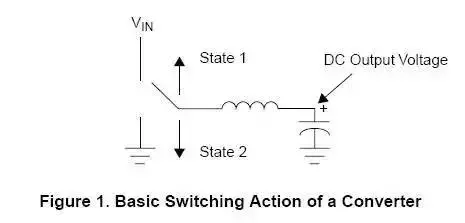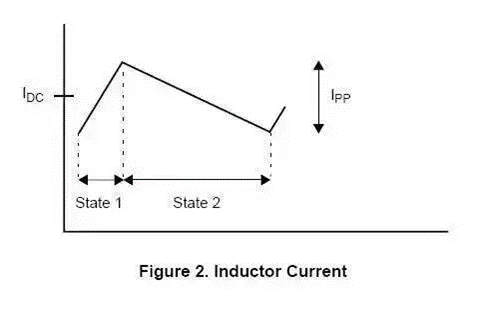Killer mace of inductor selection -- inductor current and inductor quantity
Time:2022-05-02
Views:2199
In the design of switching power supply, the design of inductance brings many challenges to engineers. Engineers should not only choose the inductance value, but also consider the current that the inductance can withstand, winding resistance, mechanical size and so on. This paper explains the DC current effect on the inductance and provides necessary information for selecting the appropriate inductance.
1. Understand the function of inductance
Inductance is often understood as l in the LC filter circuit at the output of switching power supply (C is the output capacitance). Although this understanding is correct, in order to understand the design of inductance, we must have a deeper understanding of the behavior of inductance.
In step-down conversion (Fairchild typical switching controller), one end of the inductor is connected to the DC output voltage. The other end is connected to the input voltage or GND through switching frequency.

During state 1, the inductor is connected to the input voltage through a (high side) MOSFET. During state 2, the inductor is connected to GND.
Due to the use of such controllers, inductive grounding can be realized in two ways: through diode grounding or through (low side) MOSFET grounding. If it is the latter method, the converter is called "synchronous" method.
Now consider how the current flowing through the inductor changes in these two states. During state 1, one end of the inductor is connected to the input voltage and the other end is connected to the output voltage. For a buck converter, the input voltage must be higher than the output voltage, so a forward voltage drop will be formed on the inductance.
We use the calculation formula of voltage on inductance: v = l (di / DT)
Therefore, when the voltage on the inductor is positive (state 1), the current on the inductor will increase; When the voltage on the inductor is negative (state 2), the current on the inductor decreases.
The current through the inductor is shown in Figure 2:

From the above figure, we can see that the maximum current flowing through the inductor is half of the DC current plus the switching peak current. The figure above is also called ripple current.
According to the above formula, we can calculate the peak current:

Where, ton is the time of state 1, t is the switching cycle (reciprocal of switching frequency), and DC is the duty cycle of state 1.
Warning: the above calculation assumes that the voltage drop on each component (on voltage drop on MOSFET, on voltage drop of inductor or forward voltage drop of Schottky diode in asynchronous circuit) is negligible compared with the input and output voltage.
If the drop of the device cannot be ignored, the following formula shall be used for accurate calculation:
Synchronous conversion circuit

Asynchronous conversion circuit:

Where RS is the resistance of inductive resistance plus inductive winding resistance. VF is the forward voltage drop of Schottky diode. R is RS plus MOSFET on resistance, r = RS + RM.
2. Saturation of inductor core
By calculating the peak current of the inductor, we can find out what happens on the inductor. It is easy to know that as the current through the inductor increases, its inductance will decrease, which is determined by the physical properties of the magnetic core material.
How much inductance will be reduced is very important: if the inductance is reduced a lot, the converter will not work normally. When the current passing through the inductor is large enough to the actual effect of the inductor, the current at this time is called "saturation current", which is also the basic parameter of the inductor.
In fact, the switching power inductor in the conversion circuit always has a "soft" saturation. To understand this concept, you can observe the curve of the actually measured inductance vs DC current:

When the current increases to a certain extent, the inductance will not drop sharply, which is called "soft" saturation characteristic. If the current increases again, the inductance will be damaged.
Note: the decrease of inductance exists in many types of inductors. For example: toroids, gapped E-cores, etc. However, the rod core inductance will not have this change.
With this soft saturation characteristic, we can know why the minimum inductance under DC output current is specified in all converters; Moreover, the change of ripple current will not seriously affect the inductance.
In all applications, the ripple current is expected to be as small as possible because it will affect the ripple of the output voltage. This is why people always care about the inductance under DC output current, but ignore the inductance under ripple current in spec.
|
Disclaimer: This article is transferred from other platforms and does not represent the views and positions of this site. If there is infringement or objection, please contact us to delete. thank you! |











